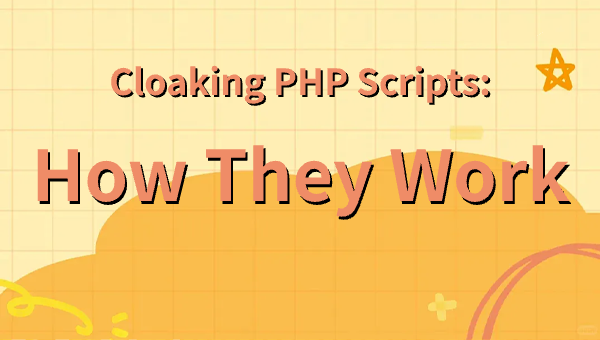Cloaking PHP Scripts: How They Work
Introduction: Cloaking Meets PHP
Cloaking has grown into an advanced strategy for marketers who want to protect their landing pages, segment traffic, and pass strict ad approvals. Among the many methods available, PHP-based cloaking scripts stand out thanks to their flexibility, easy customization, and server-side efficiency. But how exactly do they work, and what are the best practices to avoid errors or policy violations? Let’s break down the inner workings of PHP cloaking step by step.
What Is a PHP Cloaking Script?
A PHP cloaking script is essentially a small server-side program written in PHP that decides, based on visitor conditions, which content or redirect to deliver. Since PHP runs on the server, it can hide your logic from bots and competitors, making cloaking far more difficult to detect compared to purely client-side solutions.
Core Mechanisms
IP Filtering: checking visitors’ IP addresses against a whitelist or blacklist
User-Agent Filtering: recognizing known bots, crawlers, or ad review systems
Geo-Targeting: sending traffic from different countries to different landing pages
Referer Validation: ensuring the visitor came from an allowed referrer
Fingerprint Matching: advanced scripts analyze browser fingerprints to separate real users from automated systems
These mechanisms work together to decide in milliseconds whether to show a “safe” version of a page or route traffic to a high-converting landing page.
Advantages of PHP Cloaking
Speed: PHP is processed on the server, so there is no delay
Stealth: logic is not visible to the user’s browser
Customizability: easy to add rules and update them
Integration: can work with existing web frameworks or CMS
These advantages make PHP scripts a top choice for advanced affiliate and performance marketers.
Potential Risks and Pitfalls
While powerful, PHP cloaking is not foolproof:
If coded poorly, it can accidentally leak information
Misconfigured rules can block real customers
Static IP lists can quickly become outdated
Hosting environments must be properly secured to prevent exploits
Always test your scripts thoroughly in a staging environment before deploying live.
Best Practices for Using PHP Cloaking
Keep IP databases up-to-date
Regularly test redirects and user segmentation
Document your conditions for compliance
Use a version control system to track code changes
Consider working with a professional cloaking provider
With the right precautions, PHP cloaking can remain stable and compliant, even in tough advertising environments.
Conclusion
PHP cloaking scripts provide a powerful and customizable method to protect your campaigns while keeping them highly effective. They blend speed, stealth, and flexibility — but must be managed with care.
If you want to explore enterprise-grade cloaking services and stay ahead of the competition, visit adcloaking.com for more.

